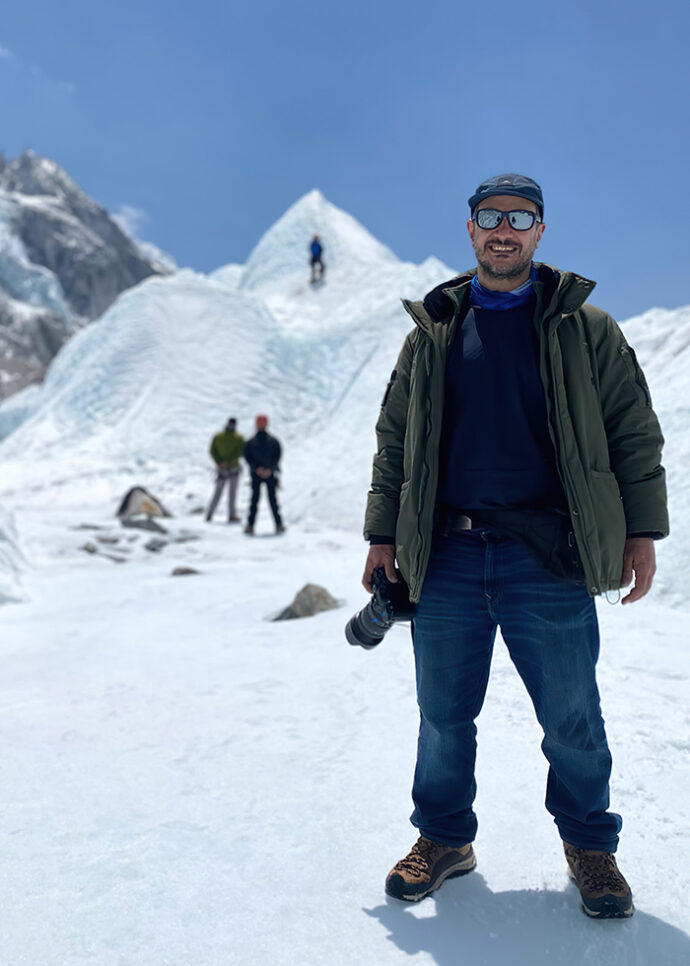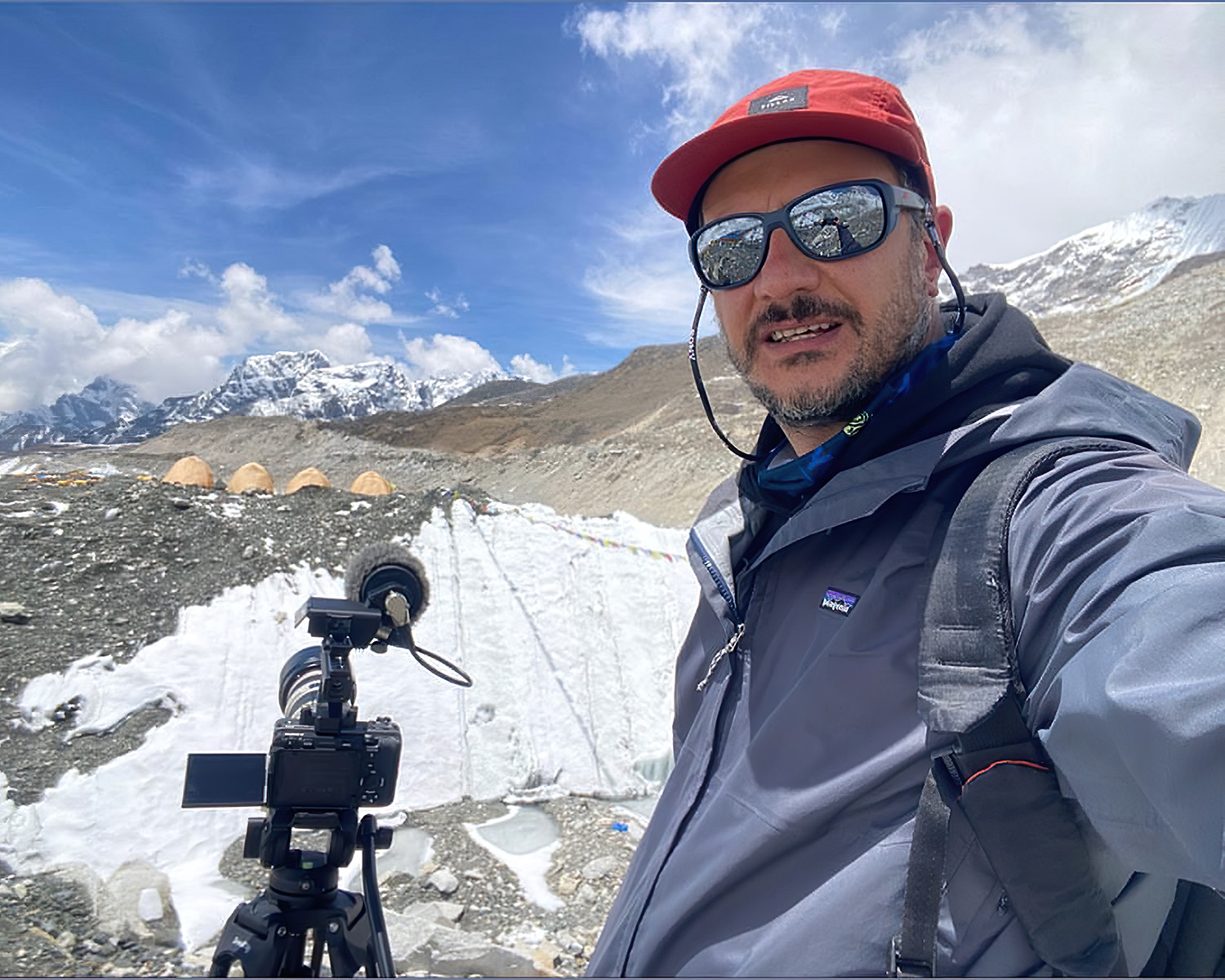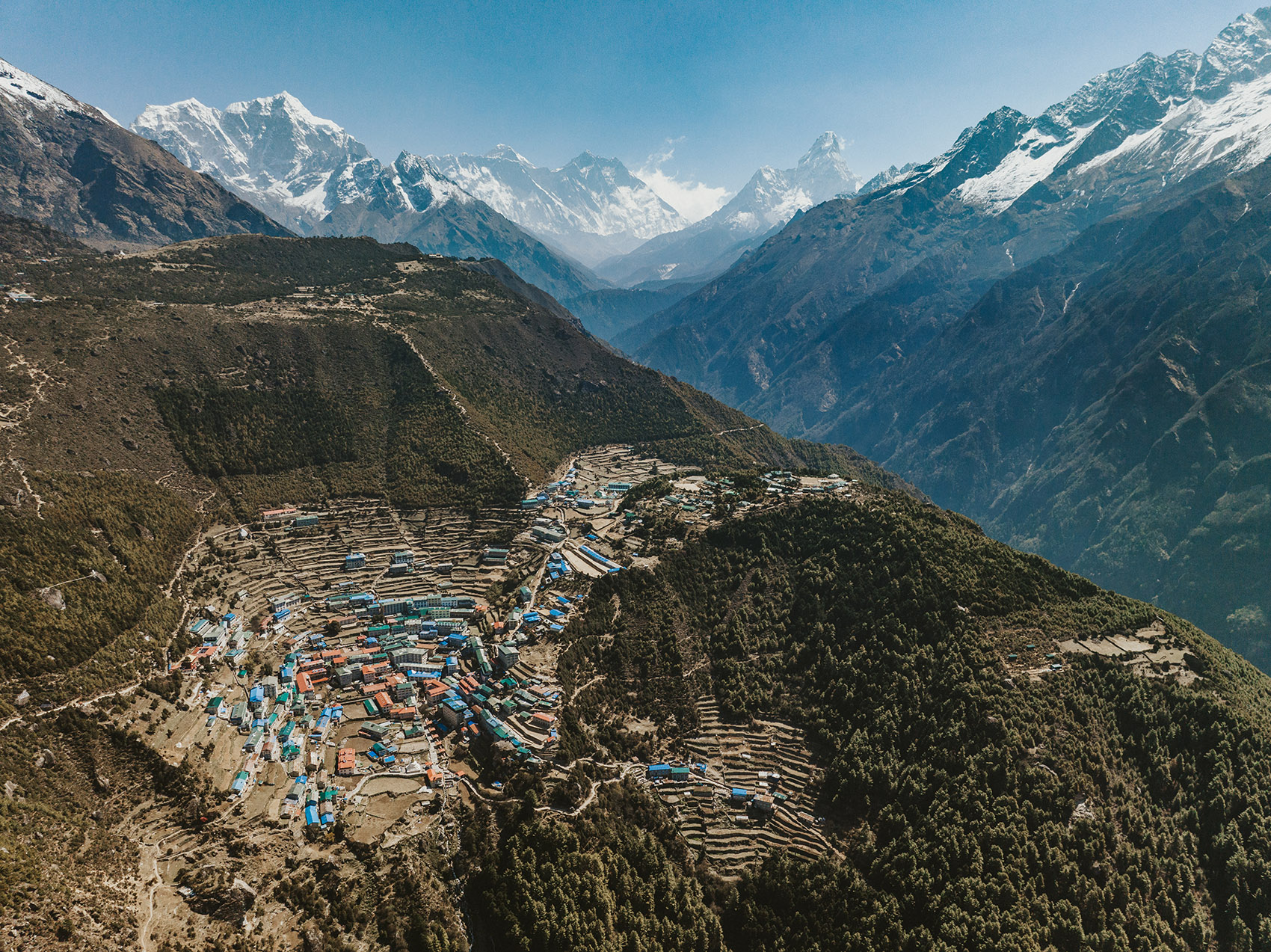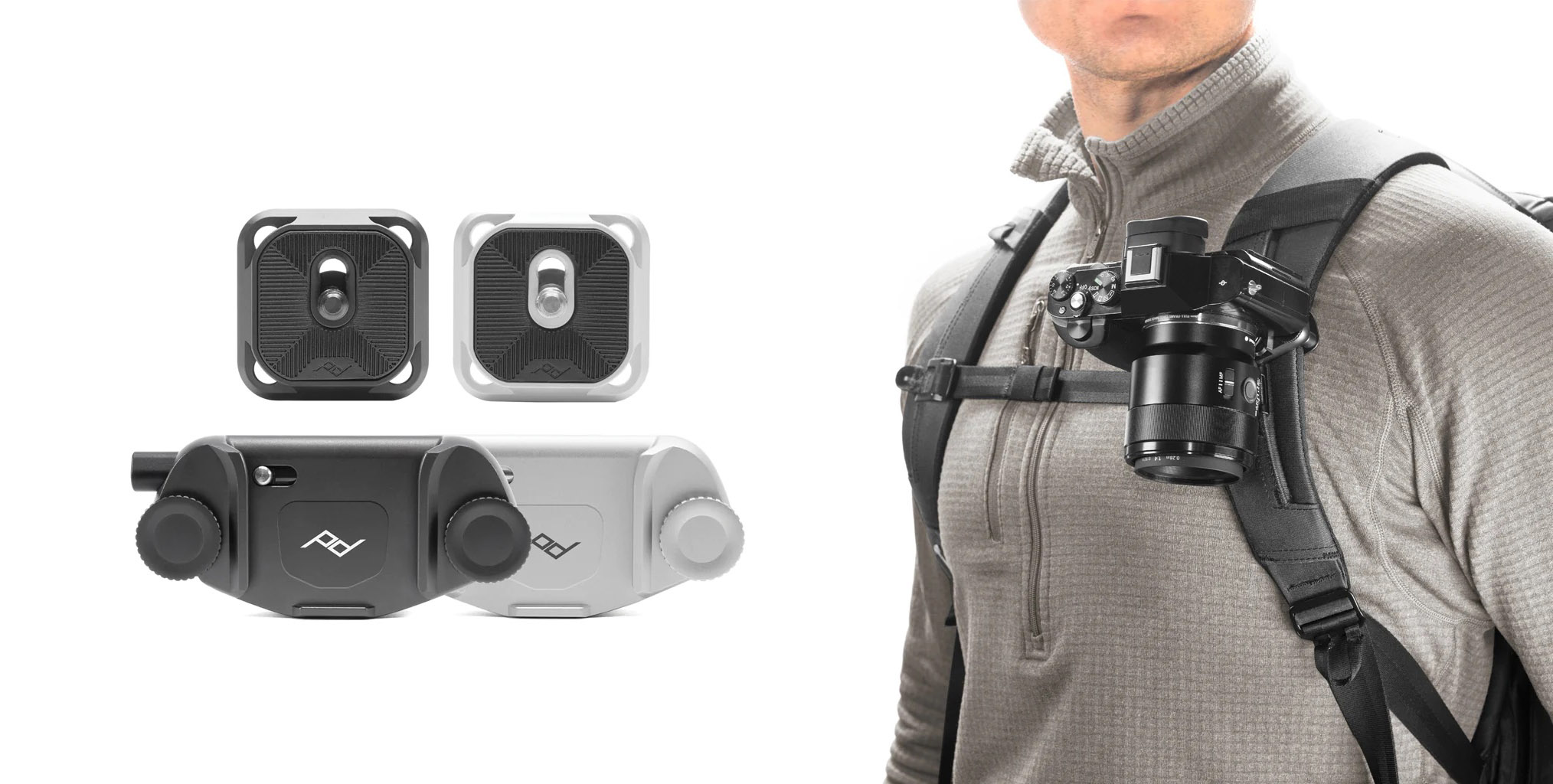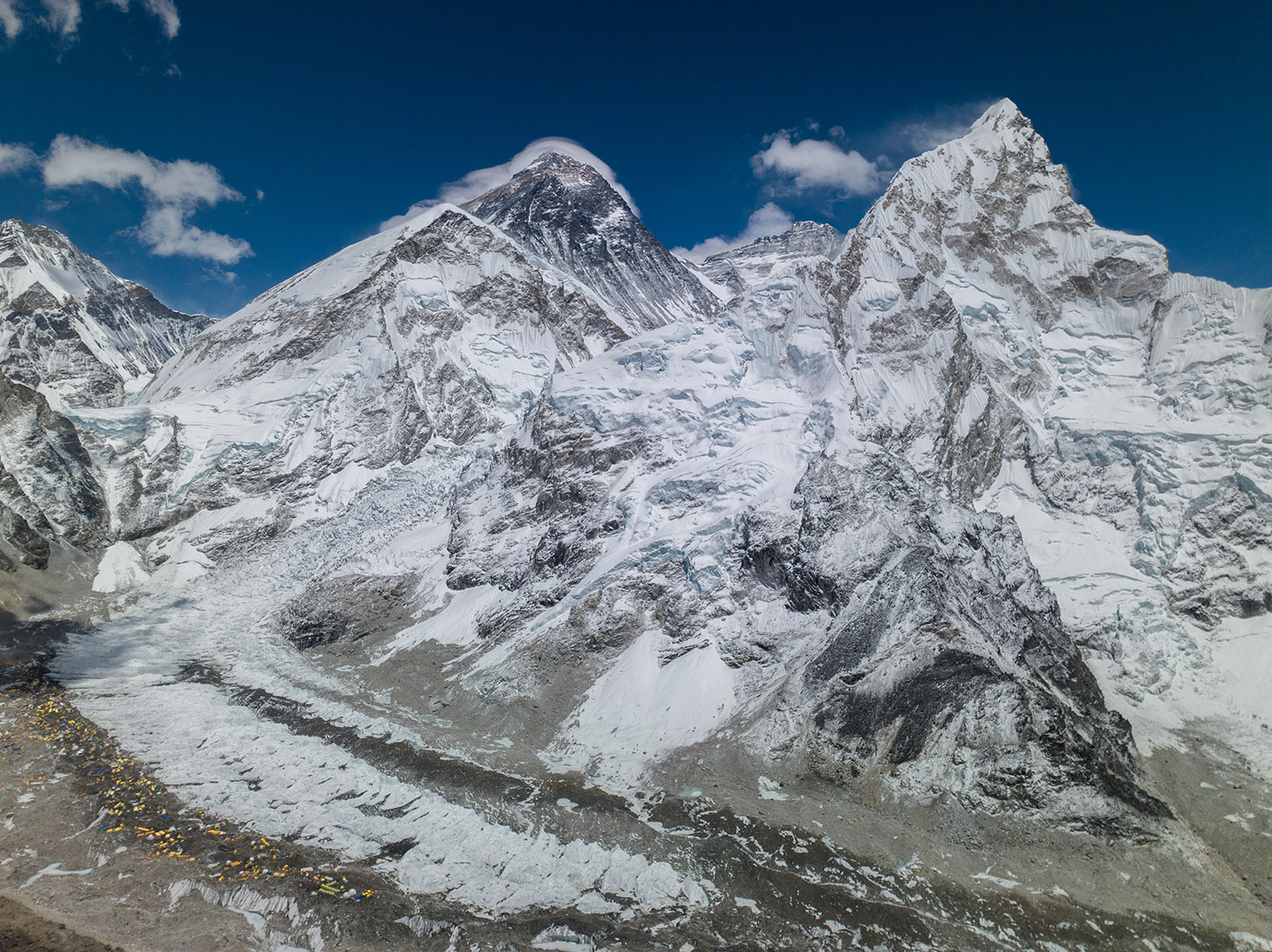Filming at Everest Basecamp
Sometimes, last-minute decisions that don’t seem logical at the time can turn out to be some of the best choices you can make in life.
One Friday night, I was contacted by my brother, and he suggested that I go with him to Mount Everest to help him work on a production. If I accepted the offer, I would be leaving the next week. At first, I thought it was a joke and that there was no way I could go there on such short notice. After thinking it over for a couple of days, I came to the conclusion that this wasn’t possible and I called him to say I wasn’t going. However, he had a logical answer or solution to every concern I had. At that point, there was no reason not to go. I was on board, excited about it, and leaving in 4 days.
Luckily, on the production side of things, I already had what I needed, so there wasn’t much gear prep needed. I packed my Sony FX3 with some lenses and accessories, along with my Mavic 3. I brought a lot of lens cleaning products because I figured they would be very much needed in that environment. I also brought a few ND filters as the bright snow would likely be a challenge to work with.
I spent a lot of time on hiking gear—good shirts, good jackets, and most importantly, good trekking shoes. If you are going to hike for 4-6 hours a day for 9 days, the shoes on your feet and the socks that you wear are really important.
Off to Kathmandu I go.
The busyness doesn’t stop.
Setting up drones, making sure everything works, shooting b-roll around Kathmandu, buying more hiking gear, meeting the climber, prepping more gear… This was non-stop.
A little bit about the project.
Yousef Alshatti is a professional athlete who set out to summit Mount Everest without any additional oxygen. My brother’s job was to film his journey up the mountain and take photos for social media as well. My job was to provide production support in every way that I could (organizing and keeping kit in order, doing audio, rough cut editing, footage backups, and many other random tasks), be the basecamp manager, be a second shooter, and last but not least, film drone footage. I was particularly excited to film drone footage in the Himalayas as it’s such a beautiful place, and getting a drone permit on my own would be no easy or cheap task.
The first step was to hike to basecamp, which took about 9 days. We flew into Lukla Airport and started the hike from there. Every day, we would hike for about 4 to 6 hours to get to a local tea house where we would sleep. Once in a while during the hikes, we’d pull out the drone and take either beautiful landscape shots or scenes of Yousef hiking. It was nice to be doing something new and following a human subject. Cine Mode was used a lot in these circumstances. When I was filming landscapes, my breath was taken away—the Himalayas truly are amazing. I always had to make sure that the bright and snowy mountaintops were not overexposing. Our ND filters really came in handy here.
Along the trek, I had my photography camera as well. This was mainly for personal use and to upload images to my Instagram account. I was talked into purchasing a camera mount that attached to the strap of my bag called Capture from Peak Design. This mount keeps your camera rigidly stable and keeps it instantly accessible. I found that by having instant access to my camera, I was able to comfortably walk around and take photos at any time with little hassle. This was probably one of the best investments for the trek, and I highly recommend it.
This is a link to the product: https://www.peakdesign.com/collections/clips/products/capture
After a fun and slightly difficult ascent, we finally made it to Mount Everest Basecamp. I was feeling a bit lightheaded and weak for the next few days but was happy to be there and knew I’d get better. This was going to be my home for 40 days—living in a tent, sleeping in -5 Celsius weather, working out of a production tent/dining room, running out of breath all the time… even when doing really simple things, laughter, more laughter, hard work, second shooting, flying my drone, working with wonderful people.
Although there were many exciting parts of the journey, one of the most thrilling was flying my drone at night when all the climbers were hiking through the Khumbu Icefall. When the drone is up in the air, you see many hikers with their headlamps walking through a trail that runs through large chunks of ice. It is truly a sight to see from above. The light from the full moon lit the surrounding ice just enough so you could make out its marvelous detail.
This is a clip that I put together:
Error: No feed found.
Please go to the Instagram Feed settings page to create a feed.
Another fun task that I was assigned was to film the melting ice at basecamp. As spring moves along, the rate at which the ice starts to melt speeds up, creating beautiful flowing streams. This was shot on my FX3.
Now, onto the topic of working with my FX3. During the last 4 or 5 days of their mission, I was at basecamp filming a few conversations/situations with my FX3, and I absolutely loved the camera. With no need for rigging, I was able to very comfortably run around a room handheld with the active stabilization on and capture content. It felt very liberating, and I started to really enjoy the small form factor. All it needs is a solution for a viewfinder, which is a very important thing to have in a sunny environment.
I haven’t had an experience in video production as unique as working at 5400 meters in altitude. I’m truly grateful that I made that last-minute decision and went on this journey. Not only was the video production aspect a lot of fun, but I had the blessing of working with an amazing team. Everyone got along really well, and many laughs were shared. I’d definitely go back to basecamp for more adventures in the future.

